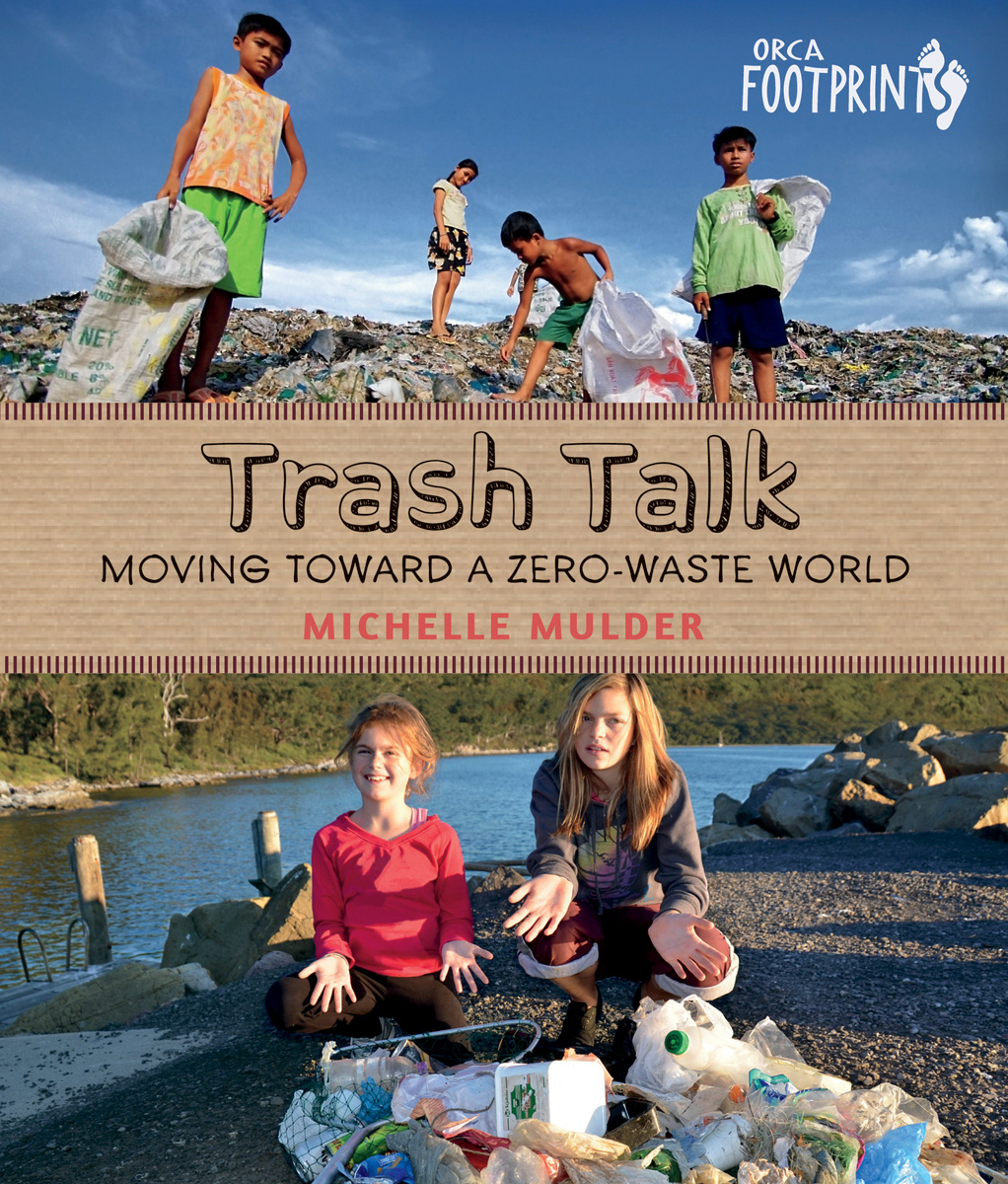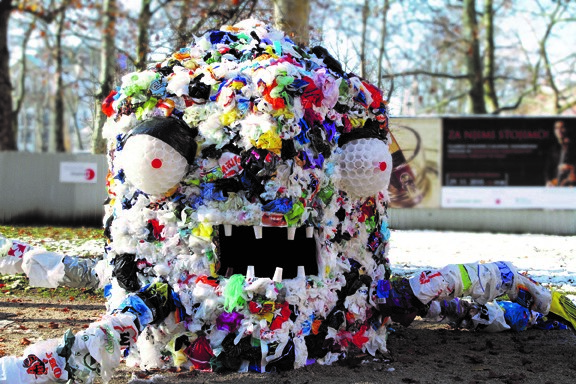| ________________
CM . . .
. Volume XXI Number 22. . . .February 13, 2015
excerpt:
Many books have been written for children on the “three R’s” and how to “reduce, reuse and recycle” in order to become more environmentally conscious. What sets this book apart from the others is that it provides a history of garbage and shows readers some very innovative ways in which people all over the world are dealing with trash. Interesting facts also provide much food for thought, one example being that for every pound of trash thrown away, 40 pounds of trash were produced in manufacturing the tossed object.
In the second chapter, Mulder explains what happens in a landfill and in an incinerator, how methane gas is formed, and what kinds of objects are deemed biodegradable. This chapter also sheds light on a growing problem with garbage in lakes, rivers and oceans. One shocking example is the North Pacific Gyre, one of five gyres in the world. The largest of the gyres, it is also known as the Great Pacific Garbage Patch and is located north of Hawaii. At its centre is a floating expanse of plastic, roughly six times the size of the United Kingdom, which causes the deaths of at least one million birds and 100,000 marine mammals each year. The third chapter focuses on several organizations and groups of people from various parts of the world who are trying to make use of food and trash that would otherwise end up in a landfill. One such organization is a kind of “glean team” that gathers surplus crops from farmers’ fields and donates them to local soup kitchens. (Sadly, it is estimated that one-third to one-half of the food produced in the world is thrown away.) Other innovative ideas include homes, planters and furniture made out of old tires, Nova Scotia’s Blockhouse School, made entirely of old books, the “Waste House” in Brighton, UK, whose insulated walls are composed of toothbrushes, denim sleeves and pant legs, video cassettes and DVD cases, and a Paraguayan children’s orchestra whose instruments are all made out of recycled trash- oilcans, bottlecaps, film reels, water pipes and parts of a meat grinder. Finally, the last chapter highlights some of the initiatives which governments, schools and private individuals in various parts of the world are employing to combat problems with trash. Many countries, for example, are banning the use of plastic bags, some schools are organizing garbage-less lunch days, while in the Netherlands, the first Repair Café, a meeting place where people can bring broken appliances, tools and other household items and learn how to repair them, led to the creation of repair cafés in 100 other cities worldwide. In this chapter, readers will also find some suggestions on how they and their families can adopt a Zero-Waste lifestyle. The text is written in a conversational style which will appeal to readers. “Trash Facts” provide additional trivia while colour photographs, perfectly suited to the text, add to the reader’s understanding of the concepts presented. A table of contents, an index, and a list of related books, movies and websites are also included. An interesting, thought-provoking book that might inspire some readers to spark some environmental initiatives of their own. Highly Recommended. Gail Hamilton is a former teacher-librarian in Winnipeg, MB.
To comment
on this title or this review, send mail to cm@umanitoba.ca.
Copyright © the Manitoba Library Association. Reproduction for personal
use is permitted only if this copyright notice is maintained. Any
other reproduction is prohibited without permission.
Next Review |
Table of Contents for This Issue
- February 13, 2015. |

 Trash Talk! Moving Toward a Zero-Waste World is divided into four main chapters, the first of which features a brief history of trash and explains how the advent of factories and people migrating from farming communities to large cities contributed to the production of trash. Contrast this with the author’s personal anecdote about a trip to the Dominican Republic during which time she could not remember seeing garbage anywhere for the entire summer she was there, likely because the people found uses for objects that others would tend to discard.
Trash Talk! Moving Toward a Zero-Waste World is divided into four main chapters, the first of which features a brief history of trash and explains how the advent of factories and people migrating from farming communities to large cities contributed to the production of trash. Contrast this with the author’s personal anecdote about a trip to the Dominican Republic during which time she could not remember seeing garbage anywhere for the entire summer she was there, likely because the people found uses for objects that others would tend to discard.